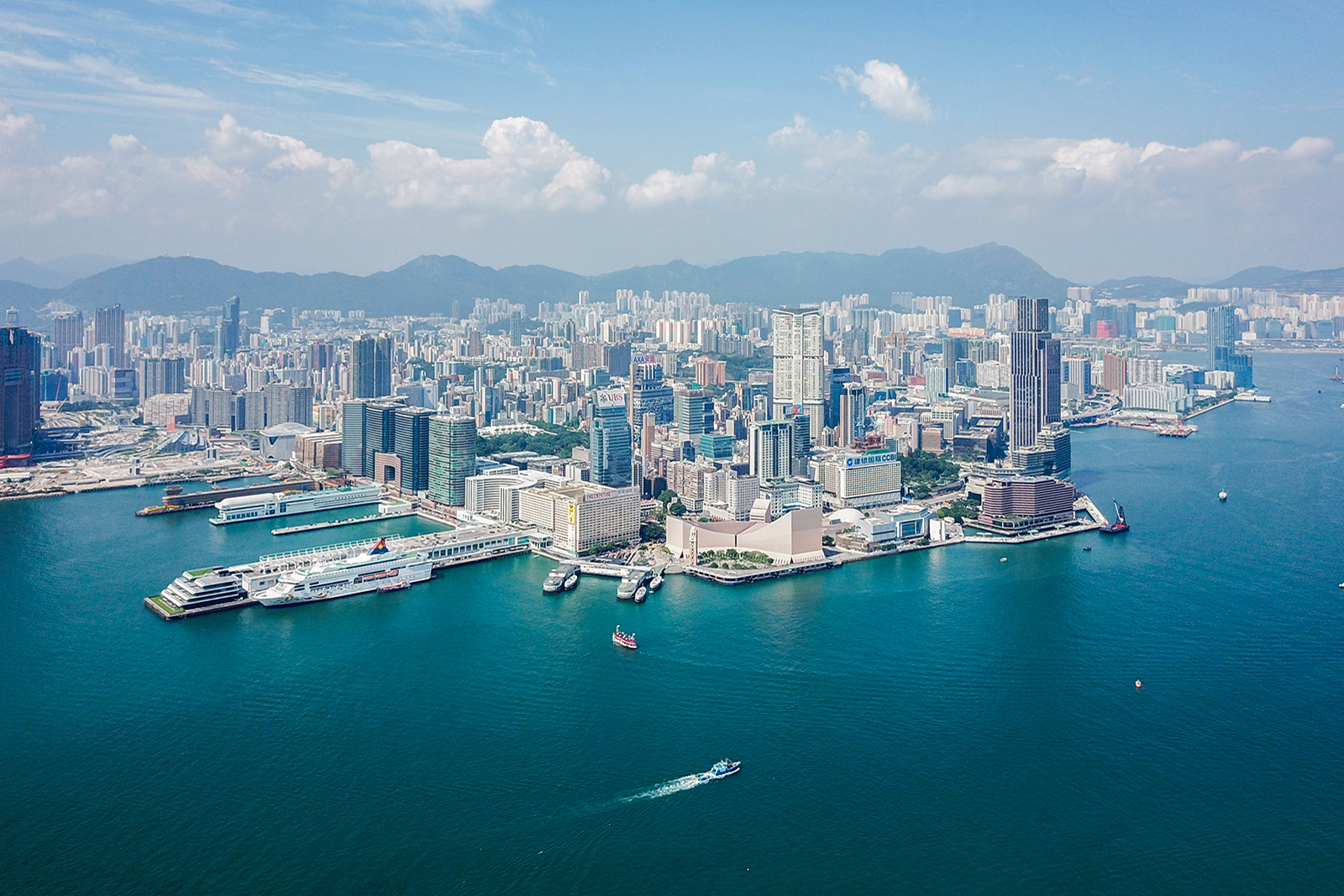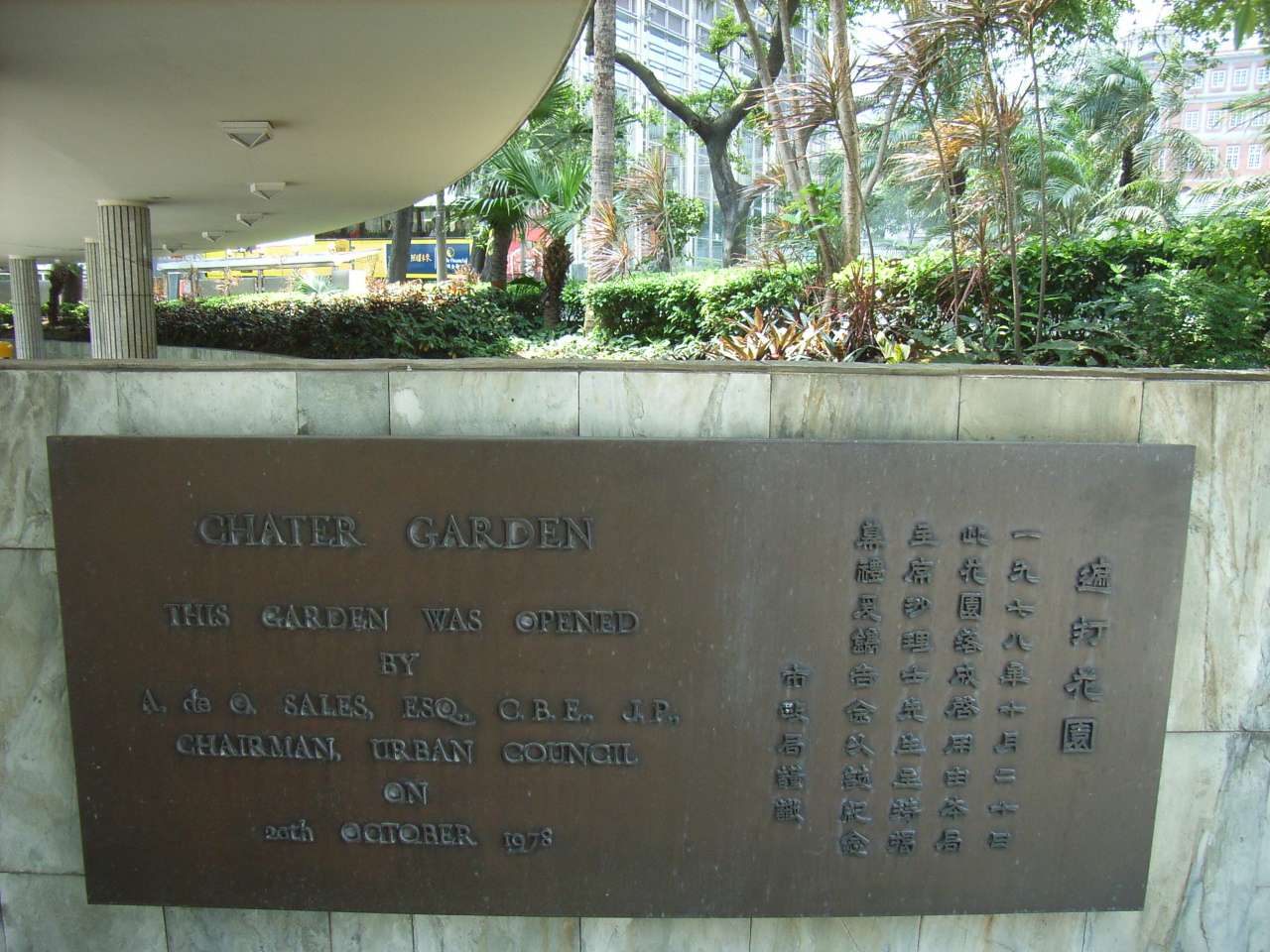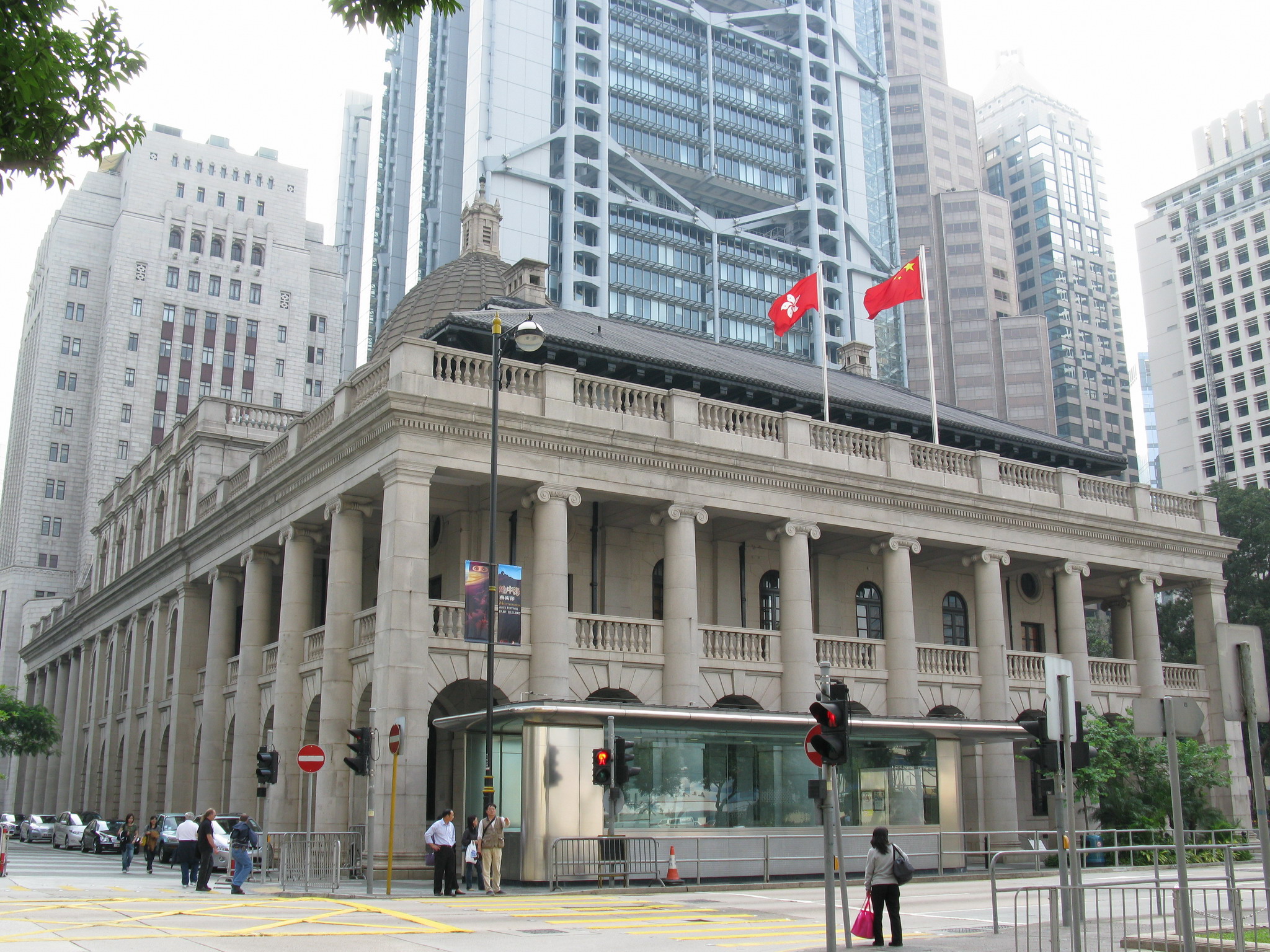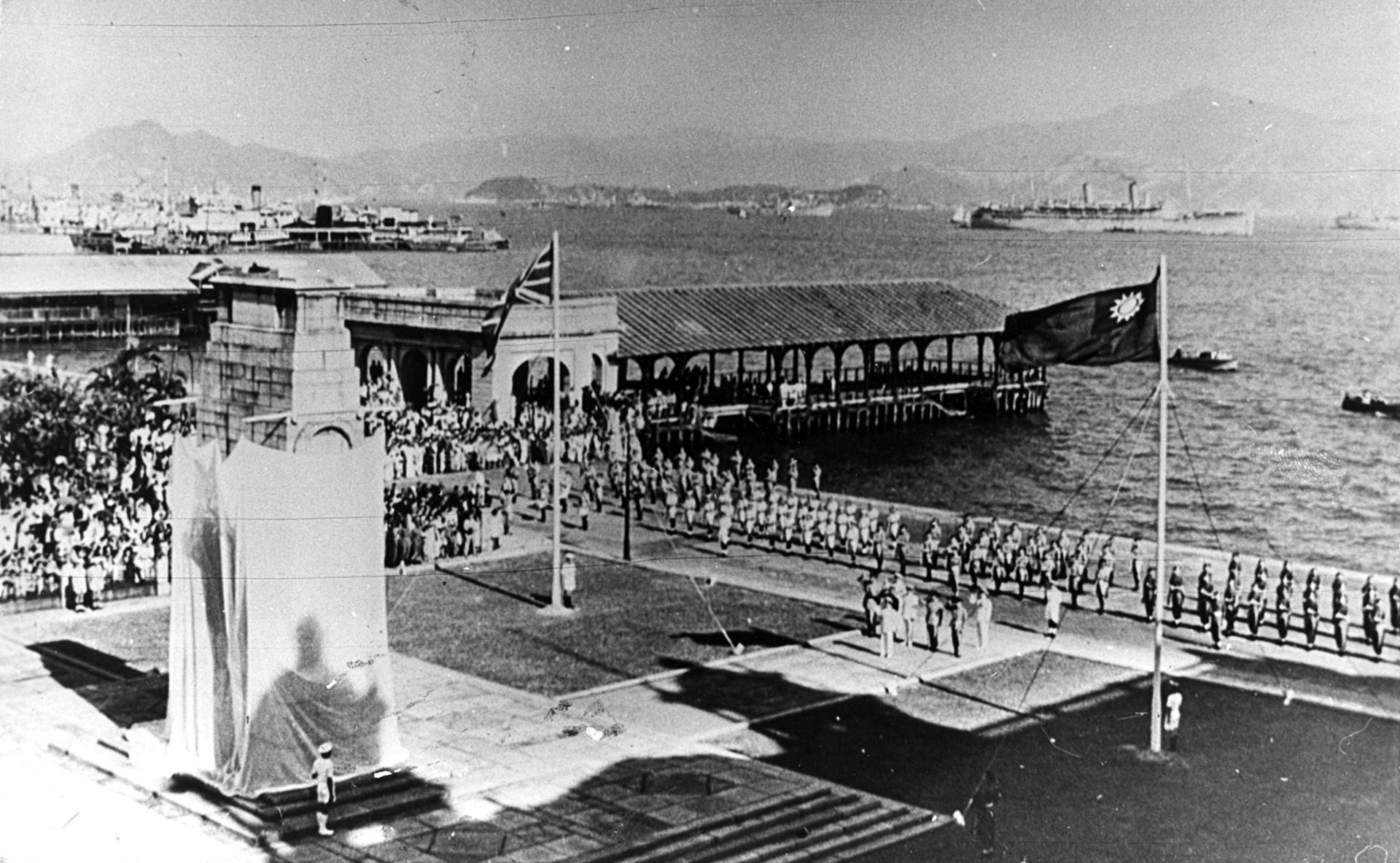|
Chater Road
Chater Road is a three-lane road in Central, Hong Kong named after Sir Paul Chater. It begins at its intersection with Pedder Street and Des Voeux Road Central in the west, and ends at Murray Road in the east. It divides Statue Square into a southern and a northern sections. History Chater Road is named after Sir Paul Chater, a leading figure in early colonial Hong Kong, who was instrumental in the Praya Reclamation Scheme, which created the reclaimed land on which the road is built. Chater House, owned by Hongkong Land, is located at the western end of the road, which abuts the similarly dedicated Chater Garden, a public square in the middle of the central business district. Events Since the growth in the number of foreign domestic helpers in Hong Kong, the road is now usually closed on Sundays and on Hong Kong bank holidays, when the road and surrounding areas are full of domestic helpers gathering and enjoy their day off work. Impromptu parties with music and danc ... [...More Info...] [...Related Items...] OR: [Wikipedia] [Google] [Baidu] |
Tsim Sha Tsui
Tsim Sha Tsui, often abbreviated as TST, is an urban area in southern Kowloon, Hong Kong. The area is administratively part of the Yau Tsim Mong District. Tsim Sha Tsui East is a piece of land reclaimed from the Hung Hom Bay now east of Tsim Sha Tsui. The area is bounded north by Austin Road and in the east by Hong Chong Road and Cheong Wan Road. Geographically, Tsim Sha Tsui is a cape on the tip of the Kowloon Peninsula pointing towards Victoria Harbour, opposite Central. Several villages had been established in this location before Kowloon was ceded to the British Empire in 1860. The name ''Tsim Sha Tsui'' in Cantonese means ''sharp sandspit''. It was also known as Heung Po Tau (), i.e. a port for exporting incense tree. Tsim Sha Tsui is a major tourist hub in Hong Kong, with many high-end shops, bars, pubs and restaurants that cater to tourists. Many of Hong Kong's museums are located in the area. Etymology The name Tsim Sha Tsui () means 'sharp sandspit' in Can ... [...More Info...] [...Related Items...] OR: [Wikipedia] [Google] [Baidu] |
Chater Garden
Chater Garden, located in the Central District of Hong Kong, is a public park directly east of the Legislative Council building. It is named after Sir Paul Chater, as is the adjacent Chater Road. History In the early days of British rule in Hong Kong, the site was part of the Murray Parade Ground. Then in 1851, it was opened as a sports and recreation area and became home to the Hong Kong Cricket Club and its ground. In 1975, Chater Garden took up the space left by the club when it moved to Wong Nai Chung Gap. The garden was developed in the 1970s, and formally opened on 20 October 1978. Due to its proximity to the seat of government, the garden has been used as a location for political rallies and demonstrations by groups in Hong Kong such as Falun Gong. See also * Central and Western Heritage Trail * List of urban public parks and gardens in Hong Kong Urban public parks and gardens in Hong Kong include: Note: Most public parks and gardens in Hong Kong are manage ... [...More Info...] [...Related Items...] OR: [Wikipedia] [Google] [Baidu] |
Island Line (MTR)
The Island line is one of eleven lines of the MTR, the mass transit system in Hong Kong. It runs from Kennedy Town in the Western district to Chai Wan in the Eastern District on Hong Kong Island, passing through the territory's major business districts of Central, Wan Chai and Causeway Bay, and connecting them with built-up areas on the north shore of the island. The line first opened on 31 May 1985. As of 2022 it travels in 25 minutes along its route, serving 17 stations. The line is indicated by the colour dark blue on the MTR route map. History The Hong Kong Government authorised the construction of the -long Island line in December 1980, after rejecting plans to extend the tram to Chai Wan. On 31 May 1985 the Island line opened with services operating between Admiralty and Chai Wan stations in six-car trains. The opening ceremony was held at Tai Koo station and was officiated by then-MTR chairman Sir Wilfrid Newton and Governor of Hong Kong Sir Edward Youd ... [...More Info...] [...Related Items...] OR: [Wikipedia] [Google] [Baidu] |
Central Station (MTR)
Central () is an MTR station located in the Central area of Hong Kong Island. The station's livery is firebrick red but brown on the platforms. The station is the southern terminus of the , a stop on the , and connects to Hong Kong station, which serves the and the . The station was originally named Chater station. It was initially conceived to cater for 330,000 passengers daily and was planned to be long – one of the longest stations in the world. More than 200,000 passengers use this station daily. The longest distance between two exits is approximately 700m. History Early plans Central station was included in the ''Hong Kong Mass Transport Study'', a system proposed in September 1967. Together with Western Market station, it was to serve as an interchange station of the and Island line. In the recommended system, the Tsuen Wan line would end at . The station was originally planned to be located under Des Voeux Road Central between Jubilee Street and Pedder Stree ... [...More Info...] [...Related Items...] OR: [Wikipedia] [Google] [Baidu] |
Tsuen Wan Line
The Tsuen Wan line is one of the eleven lines of the metro network in Hong Kong's MTR. It is indicated in red on the MTR map. There are 16 stations on the line. The southern terminus is Central station on Hong Kong Island and the northwestern terminus is Tsuen Wan station in the New Territories. A journey on the entire line takes 35 minutes. As a cross-harbour route that goes through the heart of Kowloon and densely populated Sham Shui Po and Kwai Chung, the line is very heavily travelled. History Construction The Tsuen Wan line was the second of the three original lines of the MTR network. The initial plan for this line is somewhat different from the current line, especially in the names and the construction characteristics of the New Territories section. The original plan envisioned a terminus in a valley further west of the present Tsuen Wan station. That Tsuen Wan West station is different from the current Tsuen Wan West station on the Tuen Ma line, which ... [...More Info...] [...Related Items...] OR: [Wikipedia] [Google] [Baidu] |
Furama Hong Kong Hotel
The Furama Hotel () was a 33-storey hotel in Central, Hong Kong, located at 1 Connaught Road Central. The site is now occupied by the AIA Central office building. History The Furama Hotel was designed by Eric Cumine Associates and built for the Furama group in 1973. It had 33 storeys and a total height of , with a revolving restaurant on the top floor named "La Ronda". Inter-Continental Hotels Ltd. assumed management in 1976, and the hotel was named Hotel Furama Inter-Continental. In 1990 the hotel was acquired by Kempinski and renamed the Hotel Furama Kempinski Hong Kong. Lai Sun Development (LSD) acquired the hotel's parent company, Furama Hotel Enterprises, in June 1997 for HK$7 billion.Dennis EngA little less debt for ailing Lai Sun, ''The Standard'', 18 November 2002 This was done by acquiring a 45.42 per cent stake for $3.13 billion, and a general offer at $33.50 for each remaining shares at a total cost of $6.893 billion.Veronica LukFurama stock skyrocket ... [...More Info...] [...Related Items...] OR: [Wikipedia] [Google] [Baidu] |
AIA Central
The AIA Central (), formerly called AIG Tower (), in Hong Kong is a 185-metre (607 ft.), 37-storey skyscraper that was completed in 2005 and serves as the headquarters of AIA Group. It is located in Central, not far from the landmark Bank of China Tower. The Furama Kempinski Hotel, famous for its revolving restaurant, formerly stood on the same lot that the former AIG Tower rises from, but in December 2001, the 33-storey hotel was demolished to make way for the AIG Tower. The tower was renamed to AIA Central on 9 July 2009. The building was jointly developed by Lai Sun Development, CapitaLand, and American International Group (AIG). The architectural firm Skidmore, Owings & Merrill designed the building to look like the Chinese junk, a Chinese sailboat design dating from ancient times and still in use today. Leslie E. Robertson Associates are the structural engineers for this project. As well they included a pedestrian bridge linking the tower to the Hong Kong elevated ... [...More Info...] [...Related Items...] OR: [Wikipedia] [Google] [Baidu] |
Hong Kong Club Building
The Hong Kong Club Building () is a 25-story office building located in between Chater Road and Connaught Road Central at the junction of Jackson Road, in Central, Hong Kong. The Hong Kong Club Building is currently in its third generation, in its second location. It is owned by the Hong Kong Club, which occupies 8 levels, while the other floors are leased for office use. The Hong Kong Club Building, in its second incarnation, was one of the last examples of renaissance architecture remaining in Hong Kong. The building was completed in 1897, and demolished in June 1981. It was replaced by the current modern building. History First generation Founded in 1846, the Club's first premises were located along Queen's Road Central, from the corner of Wyndham Street to the corner of D'Aguilar Street. The three-storey building was designed in a classic style. The cost of construction and furniture of £15,000 was raised through an issue of £100 shares. [...More Info...] [...Related Items...] OR: [Wikipedia] [Google] [Baidu] |
Court Of Final Appeal Building
The Court of Final Appeal Building, also known as the Old Supreme Court Building, is the home of the Court of Final Appeal of Hong Kong. It housed the former Supreme Court from 1912 to 1983 and the Legislative Council from 1985 to 2011. It is located at 8 Jackson Road, in Central, along the eastern side of Statue Square, directly west of Chater Garden. As the Old Supreme Court, its exterior is one of the declared monuments of Hong Kong. History The building was designed by Sir Aston Webb and Ingress Bell, the British architects responsible for the eastern façade of Buckingham Palace and the Cromwell Road frontage of the Victoria and Albert Museum in London. Construction of the building started in 1900 and it was opened on 15 January 1912 by the Governor Sir Frederick Lugard. The two-storey granite building is neo-classical in style supported by Ionic columns. It is surmounted by a 2.7 m high blindfolded statue of Justice, represented by Themis, the Greek Godde ... [...More Info...] [...Related Items...] OR: [Wikipedia] [Google] [Baidu] |
The Cenotaph (Hong Kong)
The Cenotaph is a war memorial constructed in 1923 and located between Statue Square and the City Hall in Central, Hong Kong,Brief Information on Proposed Grade I Items, pp. 53–54 that commemorates the dead in the two world wars who served in Hong Kong in the , and . Built in stone, it is an almost exact replica of [...More Info...] [...Related Items...] OR: [Wikipedia] [Google] [Baidu] |
Prince's Building
Prince's Building is an office tower with a six-level shopping centre, known as Landmark Prince's. Located along the western side of the southern section of Statue Square in Central, Hong Kong near Central station, the building is connected to Alexandra House and Mandarin Oriental, Hong Kong by pedestrian bridges. First generation The first Prince's Building was a four-storey Renaissance architecture building in 1904 on land created from the Chater reclamation, located directly south of Queen's Building, completed in 1899. The building was designed by Leigh & Orange and had similarities with the Hong Kong Club Building built in 1897. It was replaced by the present building in 1965. The first building housed several bank and law firm offices including: * Yokohama Specie Bank * Bank of Taiwan * Banque de l'Indochine * Deacons * Johnson Stokes & Master Second generation In 1963, the first building was demolished to make way for the current Prince's Building. It was designed b ... [...More Info...] [...Related Items...] OR: [Wikipedia] [Google] [Baidu] |
Mandarin Oriental, Hong Kong
The Mandarin Oriental, Hong Kong is a five-star hotel on Connaught Road Central in Central, Hong Kong, owned and managed by Mandarin Oriental Hotel Group. History Construction of the hotel on the site of the colonial Queen's Building on the waterfront in Central Hong KongPress Kits , Mandarin Oriental Hotel Group Mandarinoriental.com. was announced on July 9, 1960, with the name Queen's Hotel. On August 24, 1962, the '' South China Morning Post'' reported that the unfinished hotel's name had been changed to The Mandarin, because "a nationwide survey of the United States seeking American reaction to the hotel name shows that the American p ... [...More Info...] [...Related Items...] OR: [Wikipedia] [Google] [Baidu] |








